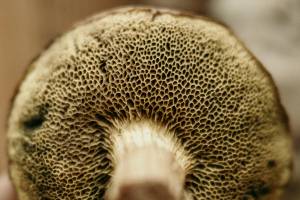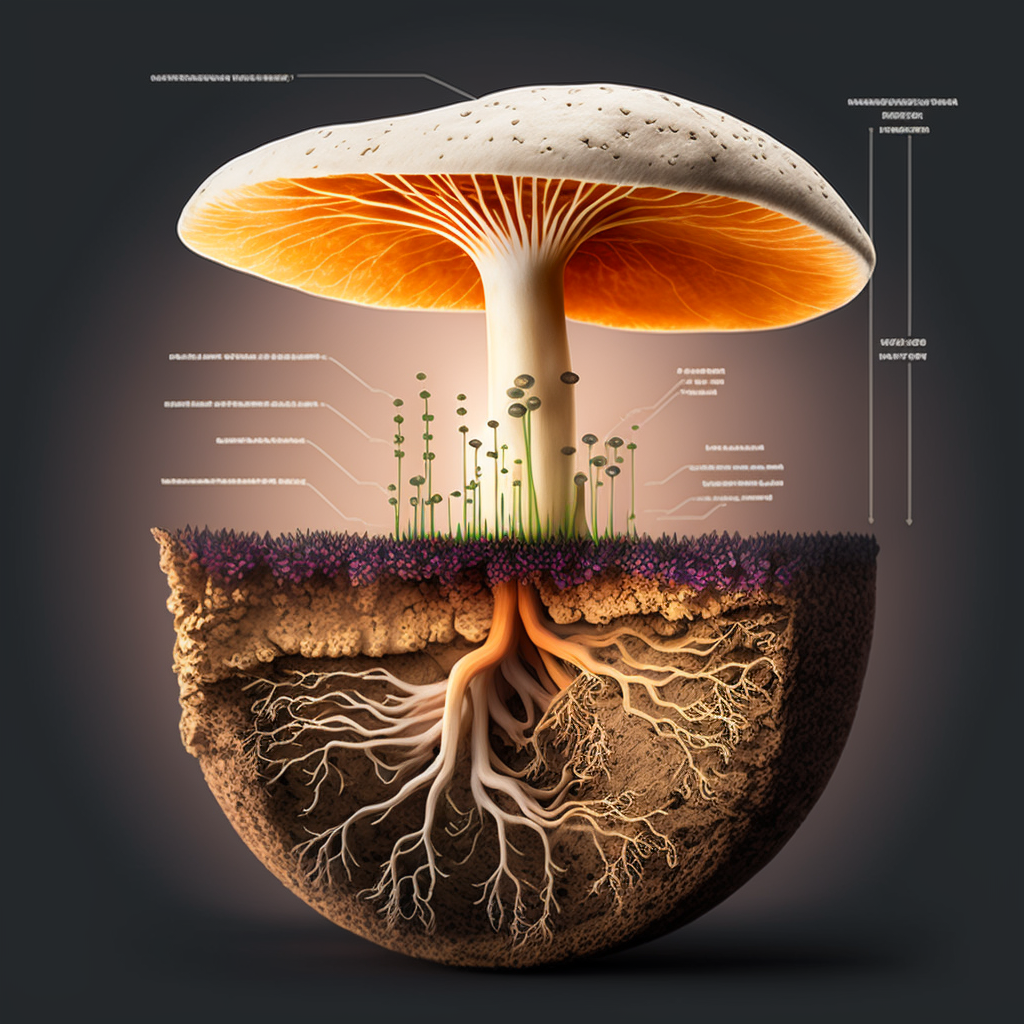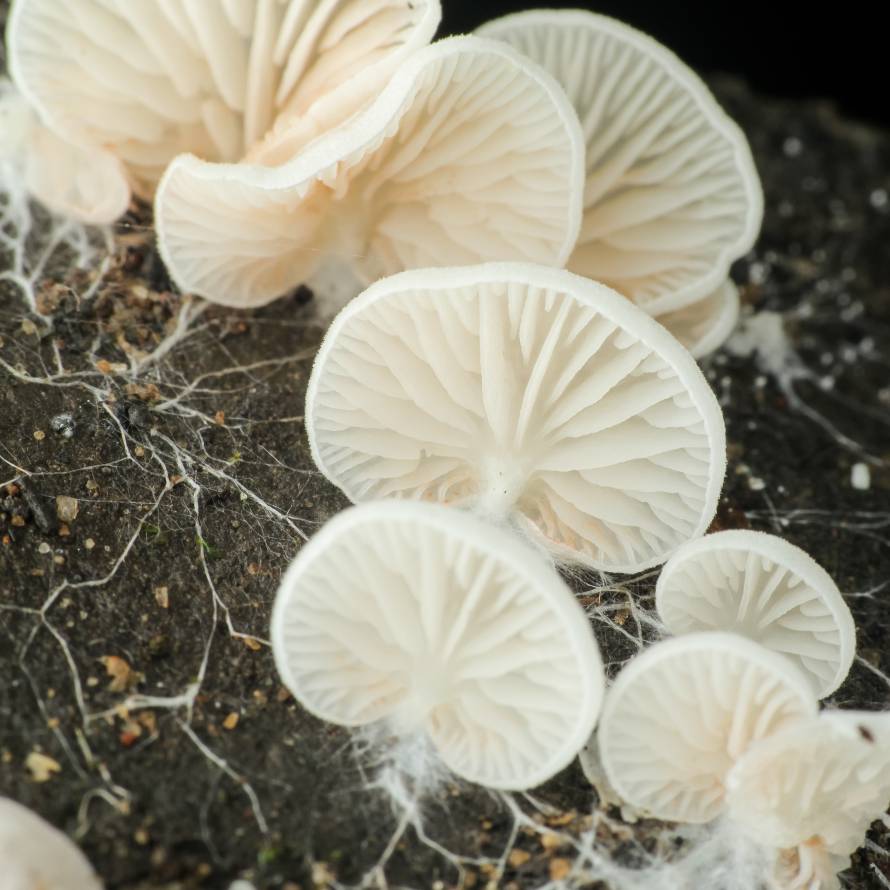Why studying the mushroom anatomy is essential ?
The study of mushroom anatomy is vital in order to identify different species and comprehend their biology, reproduction, and adaptation to the environment.
It provides information on the role of mushrooms in the ecosystem and their relationships with other species.
Accurate identification of different species heavily relies on a thorough understanding of their anatomy. By examining the various parts of the mushroom anatomy, such as the cap, stem, gills, and pores, mycologists can differentiate between similar-looking species that have distinct differences in anatomy.
Furthermore, the mushroom anatomy sheds light on its life cycle and reproductive processes. Every aspect of a mushroom, including its cap, stem, gills, and pores, has a specific purpose that helps it to survive and grow.
What is the basic anatomy of a mushroom?
The anatomy of a mushroom provides insights into its role in the ecosystem and its interactions with other species. The function of different parts and structures allows mycologists to study the relationships between mushrooms and other organisms, such as plants, animals, and soil microbes.
The shape, size and color of a cap of a mushroom define his purpose in the ecosystem.
The shape of the cap of a mushroom is one of its defining and noticeable characteristics. The shape can range from circular to wavy or even lobed and serves a specific purpose in the mushroom’s growth and reproduction. For example, a convex shape helps protect the gills and control the dispersal of fragments, while a more open shape, like a flattened cap, facilitates spore production and dispersal.
And maybe the most important, the shape of the cap indicates the age of the mushroom and its readiness for spore production.
The size and the color of the mushroom cap.
The size is determined by factors such as the species of the mushroom, growing conditions, and age of the fruiting body. The size of a mushroom’s cap varies from tiny button-sized specimens to large caps that can measure several inches or feet. The size indicates the maturity of the mushroom and its ability to produce and disperse fragments. Larger caps are typically more mature and ready for spore production, while smaller caps suggest that the mushroom is in its early stages of growth.
The color is one of the mushroom anatomy most distinctive features and can vary greatly between species. Some species have brightly colored caps, while others are more muted or dull in appearance. The color of the cap changes as it grows and matures and is influenced by environmental factors such as sunlight, moisture, temperature, and the presence of certain chemicals in the soil or substrate. Understanding the relationship between cap color and environmental factors is an essential tool for accurate species identification and determining its suitability for consumption.

The length of the stem is a critical factor in mushroom anatomy that can contribute to identification.
In the mushroom anatomy, the stem is the elongated part of the body that supports the cap and elevates it above the ground. The length can range from a few millimeters to several centimeters. For instance, the white button mushroom (Agaricus bisporus) stem is around 4-5 centimeters, while the morels (Morchella esculenta) stem is much shorter, usually only a few centimeters. The stem length can differentiate similar-looking species and provide information on the mushroom’s growing conditions, such as longer stems indicating growth in a shaded area and shorter stems indicating growth in a sunlit environment.
The length of the stem varies between species, usually ranging from a few centimeters to several inches. The stem’s structure also helps in identifying the species, with some having a sturdy and smooth stem, while others have a fibrous and rough stem. The stem’s function is to hold the cap high, exposing the fragments and gills to the air, which is essential for spore dispersal and thus crucial for the reproduction and continuation of the mushroom species.
The stem of a mushroom is a significant aspect of its anatomy and is the vertical structure that supports the cap, gills, and provides a connection to the substrate below. The stem’s thickness can vary, and it can be equal in width or thicker at the bottom and tapered at the top. It can also be either smooth or covered in fine hairs or scales.
For example, the common Agaricus bisporus has a white and smooth stem, while the shaggy mane (Coprinus comatus) has a stem covered in scales and varyging in width.
The gills of a mushroom serve to produce and release spores.
The gills are the reproductive units, they are crucial for the species’ survival and propagation. The gills are located on the underside of the cap and consist of thin, finger-like structures arranged in close proximity for maximum spore production and dispersal.
The shape of gills is a significant feature for mushroom identifications, which can be attached or free, narrow or broad, and vary in shape, such as linear, fan-shaped, or circular. The gill shape affects the release of spores, playing a crucial role in the mushroom’s reproduction.
The gills play a vital role in the mushroom anatomy by producing spores that contain the reproductive cells or fragments of the fungus. Their shape and arrangement, from straight to forked and tightly packed to widely spaced, can differ among species and can help identify them.
The arrangement of pores is a crucial characteristic in identifying mushroom species.
The pores release spores containing the reproductive units. The number, size, and distribution of pores can greatly vary and help differentiate similar-looking varieties, such as round pores in boletes and angular pores in polypores.
The pores are tiny openings on the undersurface of the cap responsible for releasing fragments for reproduction. Their shape and distribution play a crucial role in identifying different species and determining their edibility. Understanding the function of pores is crucial for proper use of mushrooms, including culinary, medicinal, and toxic purposes.
The identification of mushroom pores is important for mycologists and foragers. Tiny circular openings on the undersurface of the cap, typically in place of gills, are used to differentiate species and determine edibility. For example, the circular pores of the edible Boletus edulis contrast with the angular pores of the poisonous Amanita virosa. The size, shape, and spacing of pores also provide further identification cues, making understanding the anatomy of mushroom pores crucial.




